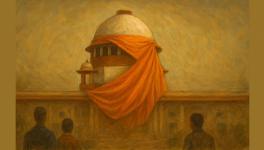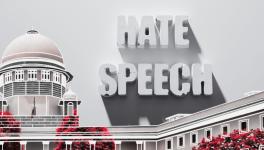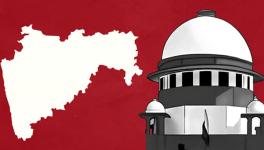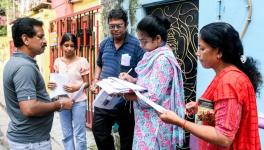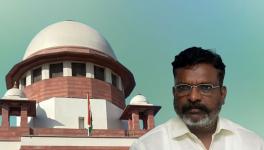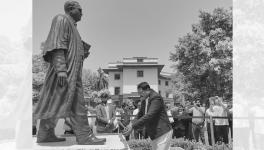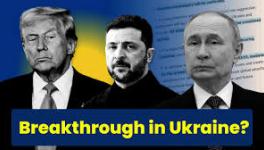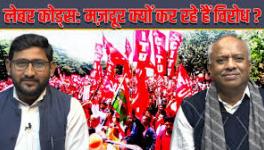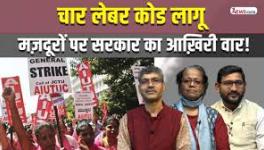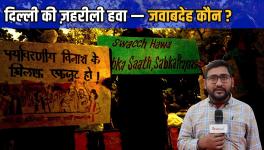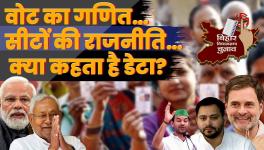Words to Bulldozers: How a CM’s Rhetoric Normalised Punitive Policing in Bareilly
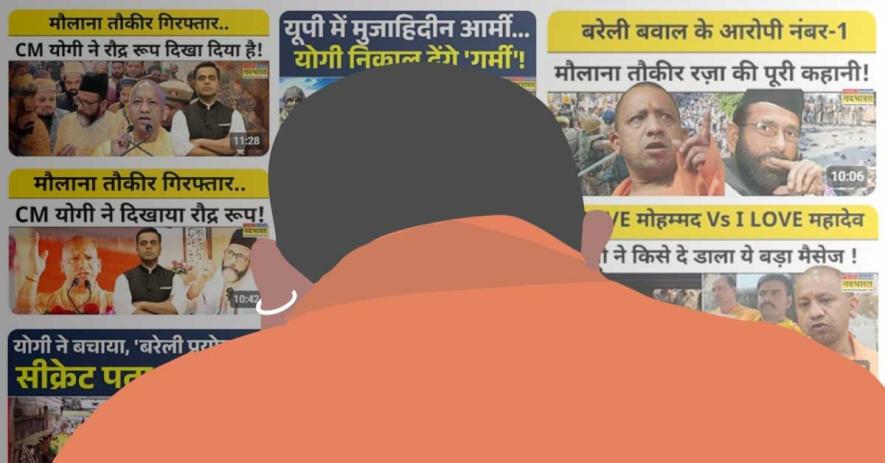
On and after the ‘I Love Muhammad’ controversy that began in September 2025, Uttar Pradesh’s Chief Minister Yogi Adityanath made repeated public statements — notably on September 28 — promising strict, visible punishment for those who “trouble” public order, using phrases such as “chedhoge to chodenge nahi”, “Generations will remember“, “Ghazwa-e-Hind would not succeed and would instead be handed a ticket to hell” and “denting and painting must be done.”
While the speech originated as a local executive response to the Bareilly protest, its propagation and amplification were largely mediated through national and regional media, especially Hindi television channels like Times Now Navbharat, Zee News Hindi, and News18 Hindi, which paired the CM’s words with dramatic visuals of protests, police action, and property demolitions. Short-form clips circulated widely on social media, creating a feedback loop that magnified both the rhetoric and the state response.
This media-driven amplification transformed a local law-and-order issue into a nationally visible spectacle of punitive governance, normalising coercive enforcement and targeting of a religious community. The timing and scale of dissemination may also have significant political resonance, particularly with the upcoming Bihar elections, as the Hindi-language media networks ensured that the CM’s rhetoric reached a broad, politically significant audience.
Within days the state response in Bareilly intensified: large-scale arrests, property-sealing and demolition actions, 48-hour internet suspensions, criminal FIRs (running into hundreds or thousands in some counts), and administrative notices against aides of the cleric who called the Bareilly protest. That sequence of ‘protest → CM rhetoric → heavy-handed enforcement’ raises three connected questions the rest of this piece examines in depth:
- Did the CM’s speech cross legal lines such as incitement or unlawful discrimination?
- Did the state response follow due process and the Supreme Court’s own safeguards (including the duty to investigate hate speech suo moto)?
- What are the measurable social, legal and media consequences of that political rhetoric?
What Happened — A Timeline
The trigger (September 4–9, 2025): The flashpoint began on September 4 when an illuminated board/banners reading “I Love Muhammad” appeared during an Eid-e-Milad-un-Nabi procession in parts of Kanpur (Syed Nagar/Rawatpur). Local objections, framed by some Hindu groups as a “deviation from tradition”, led the police to register an FIR on September 9 against 24 persons (9 named, 15 unknown) for allegedly disturbing communal harmony. The complaint, according to the report of India Today, centred on shifting tents/banners into a location on a public road near a gate used by Ram Navami processions. That apparently small ritual alteration escalated as news and social media spread the story to other districts.
Escalation and the Bareilly protest (September 26–27, 2025): On September 26, a public gathering in Bareilly — called in sympathy with the “I Love Muhammad” campaign and associated with cleric Tauqeer Raza Khan — clashed with police after Friday prayers; police used lathi-charge and reported stone-pelting and injuries to officers. According to a report of Times of India, authorities say the protest had been called without permission; police also said the gathering showed signs of pre-planning through social media groups. Multiple FIRs and detentions followed. Local reporting states dozens detained with FIRs filed against hundreds — and some outlets report FIR counts running into the thousands across multiple stations. Shortly after the clashes, the cleric and several aides were arrested.
The Chief Minister’s response (September 28, 2025): Speaking at a public ‘Viksit UP’ event, CM Yogi Adityanath warned that those who “vandalise in the name of faith… attack the police… we won’t let you go… chedhoge to chodenge nahi aur chodenge nahi toh fir chootoge bhi nahi.” He used phrases such as “denting and painting must be done” and framed the response as necessary to protect festivals and public safety. These comments were widely reported and repeated across national news outlets the same day and the day after.
After the contentious speeches delivered by CM Adityanath, the district administration moved decisively: large-scale arrests and FIRs were filed, properties linked to accused persons were sealed or demolished by the local authority demolished including a banquet hall and other structures allegedly used by those arrested, administrative notices, for example, power-theft notices, were issued against associates of the cleric, and internet and SMS services in Bareilly district were suspended for 48 hours citing maintenance of public order, as per The Economic Times. Several human-rights and legal activists have already filed petitions and complaints alleging lack of prior notice for demolition and possible collective punishment. Political parties and civil-society delegations have begun to visit the city; opposition leaders are demanding investigations.
The Problem With His Speeches
Targeting + personal reference. The CM specifically attacked a cleric’s actions, namely Tauqeer Raza Khan, and conduct in public, saying that the “Maulana forgot who is in power” and promising retribution that would be remembered by “future generations.” Targeting an identifiable leader and associating him and his followers with violence elevates the rhetoric beyond abstract law-and-order language.
Punitive metaphors taken literally. The repeated use of “denting and painting” and explicit references to the “bulldozer” rhetorical universe, and actual demolitions in other recent UP campaigns, is not merely figurative; in the current UP context it has an institutional history as a public performance of punishment — a state spectacle with material consequences. The phrase therefore reads as both a policy cue and a public warning.
Promise of force/deterrence directed at a community act. Even if the immediate trigger was violence, the CM’s formula — “If you trouble us, we will not spare you” — was framed to deter a specific form of expressive action, such as displaying I Love Muhammad posters, that political actors and some civil-society figures had defended as speech. The combination of delegitimisation, portraying the slogan as manipulation of children or anarchy, plus promise of collective discipline is consequential.
Those three features — naming, punitive metaphor, and generalised deterrence — are the elements that make legal and normative analysis urgent.
How Media Amplification Changed the Story
The media ecosystem played a decisive role in transforming Yogi Adityanath’s remarks from a local political reaction into a nationally mediated performance of power. Within hours of his speech, both television and print outlets had front-paged his most aggressive lines — “chedhoge to chodenge nahi” and “denting and painting must be done” — turning threats of retribution into viral catchphrases.
National and regional broadcasters, including Times Now Navbharat, Zee News Hindi, and News18 Hindi, ran segments that paired these quotes with dramatic visuals of protests, lathicharges, and property demolitions. The YouTube thumbnails and on-screen tickers themselves became an extension of the state’s messaging — text overlays like “Maulana bhool gaya kaun sarkar mein hai” or “Bareilly mein danga, sarkar ki kathor karwai” visually encoded the CM’s warning as spectacle and slogan.
This media choreography had a dual effect. First, it nationalised the CM’s rhetoric, ensuring that what began as a local communal disturbance was recast as a state-wide law-and-order triumph. Second, the widespread replaying of his lines — often stripped of context and accompanied by enforcement footage — normalised the language of punishment and deterrence. Even platforms that did not editorially endorse the speech contributed to its amplification through repetition and aestheticisation.
Some outlets, such as The Wire and The Indian Express, offered a countervailing frame: detailed timelines, verification of police claims about “online toolkits,” and critical analysis of the administration’s disproportionate use of force. But these were exceptions within an overwhelming current of performative law-and-order coverage. The split in framing — between law-and-order narratives and civil-liberties scrutiny — reveals how editorial positioning directly shapes the moral valence of communal incidents.
Short-form videos from these channels, extracted as YouTube shorts and Twitter/X reels, circulated widely on social media. These clips — the CM’s warning juxtaposed with scenes of violence and police deployment — fed a feedback loop: the more viral the visual, the stronger the administrative justification for subsequent measures like internet suspension and mass arrests. In effect, the media ecology and the state’s coercive apparatus became mutually reinforcing.
This convergence also raises a constitutional question about mediated governance. When executive speech, journalistic amplification, and administrative coercion operate in sync, the boundary between state messaging and independent reportage collapses. The outcome is not merely the spread of information, but the construction of a “performance of control”, where the appearance of decisive governance substitutes for adherence to due process.
Attached is a collection of YouTube thumbnails from Times Now Navbharat, Zee News Hindi, and News18 Hindi demonstrates this vividly — a montage of headlines that blur the line between news coverage and narrative reinforcement, framing punitive action as political virtue.
What the Law Says, Where Courts Have Drawn the Line
Three interlocking legal rules matter here:
- The statutory toolbox for “hate” / public-order speech: India’s criminal law criminalises speech that promotes enmity or hatred between groups (e.g., IPC Section 153A/Section 198 BNS), imputations prejudicial to national integration (IPC Section 153B/Section 197 BNS), deliberate and malicious acts intended to outrage religious feelings (IPC Section 295A/Section 298 BNS), and statements likely to create terror or public alarm (IPC Section 505/Section 356 BNS). These are the provisions courts and police typically invoke in communal-speech cases. The Supreme Court has emphasised that lawful restrictions must be precisely applied and proportionate
- The Supreme Court’s duty-to-act on hate speech: Shaheen Abdulla and follow-up orders: In Shaheen Abdulla v. Union of India (2022), the Supreme Court highlighted the “growing climate of hate” and directed police chiefs to take suo motu action in hate-speech incidents — specifically instructing registration and investigation under IPC sections such as 153A, 295A and 505 without waiting for a private complaint. These directions were later extended to all States/UTs; the court took the view that proactive policing is essential to preserve the secular fabric envisaged by the Preamble. That jurisprudence puts an onus on state police: if a public utterance plausibly constitutes hate speech, police must investigate it on their own motion.
- The constitutional limit: incitement and proximity to violence: Indian courts have insisted on a context-sensitive test. The classic guide is Kedar Nath Singh v. State of Bihar (1962), where the Supreme Court upheld sedition law only for words that have the “tendency or intention of creating public disorder” or inciting violence; mere abusive or critical expression cannot be criminalised. Modern caselaw returns to the same principle: to punish speech the state must show an intention or proximate tendency to produce imminent lawless action — not merely dislikeable or provocative words. This high threshold matters because it keeps robust political speech protected while allowing punishment where speech is truly dangerous.
Apply the law to Facts: Did UP CM Cross the Line?
This is the crucial, uncomfortable question. Courts usually apply a two-part analysis to political speech by powerful actors:
- Does the speech itself contain elements of the statutory offences?
The Chief Minister’s speech went beyond mere governance rhetoric. It singled out a specific cleric and his supporters, implicitly ascribing collective culpability to a religious community. The language of punishment and humiliation—phrases such as “denting and painting” or “beaten as in Bareilly”—was not random metaphor; it invoked a visual and historical grammar of state-sanctioned coercion. These expressions are deeply loaded in Uttar Pradesh’s recent political lexicon, symbolising demolition drives, police beatings, and targeted action that disproportionately affect Muslim localities.
Further, the assertion that “future generations” would be taught a lesson carries the unmistakable tone of collective retribution, extending the threat from present offenders to an entire community across time. Such language constructs Muslims not as citizens subject to law, but as an enduring adversarial category — a perpetual “other” against whom exemplary force is justified.
Under Sections 153A (now Section 196 of BNS) and 295A (now Section 298 of BNS) of the Indian Penal Code, the test for criminality hinges not merely on overt incitement but also on whether the speech promotes enmity, targets a community, or is likely to disturb public tranquillity. Read against the backdrop of recent police actions in UP—demolition of Muslim-owned properties, custodial violence, and selective FIRs—the Chief Minister’s words may reasonably be understood as an endorsement and encouragement of discriminatory state practices.
Moreover, the Supreme Court’s jurisprudence in cases such as Amish Devgan v. Union of India (2020) clarifies that when influential figures make statements capable of mobilising real-world hostility, the likelihood of incitement must be assessed contextually, not in isolation. From that perspective, Yogi Adityanath’s remarks arguably cross the boundary from administrative assertion into speech that legitimises and incites discrimination.
In sum, while the speech may not contain an explicit call to violence, it performs a dog-whistle function: normalising state-backed hostility and signalling permissibility for coercive action against a targeted religious group. In legal terms, that makes it a fit case for prima facie examination under Sections 153A, 295A, and 505(2) IPC, especially given the speaker’s constitutional position and the demonstrable pattern of violence that followed.
- What changed after the speech? (state action and proportionality)
The true constitutional stakes emerge not merely from what was said, but from what followed. When a Chief Minister’s public rhetoric is swiftly mirrored by administrative action—bulldozers rolling in, FIRs multiplying overnight, and digital blackouts silencing affected districts—the question is no longer one of abstract speech, but of state power animated by speech.
In the immediate aftermath of Yogi Adityanath’s address, municipal and police authorities in multiple UP districts launched coordinated operations: mass detentions of Muslim youth, property demolitions framed as “encroachments,” and sweeping suspension of internet services. These were not isolated law-and-order responses but a choreographed display of retribution, executed without adequate notice, hearing, or judicial oversight.
Courts have repeatedly emphasised that executive spectacle cannot substitute due process. In its observations concerning “bulldozer justice,” the Supreme Court has held that demolitions carried out as instantaneous punishment for alleged offences are unconstitutional unless preceded by notice, opportunity to respond, and adherence to municipal laws (Jamiat Ulama-i-Hind v. North Delhi Municipal Corporation, 2022). The law draws a bright line: urban planning cannot be weaponised as penal theatre. Yet, in Uttar Pradesh, the chain of events—fiery speech followed by visible coercive measures—suggests a punitive motive masquerading as law enforcement.
Equally significant is the Shaheen Abdulla v. Union of India (2022) principle, which imposes a positive duty on the police: they must initiate suo-moto FIRs against hate speech, irrespective of the speaker’s political stature. The judgment underscored that inaction is complicity, and selective enforcement deepens discrimination. In this case, law enforcement pursued alleged protestors with urgency but failed to act on the Chief Minister’s inflammatory remarks, despite clear statutory grounds under Sections 153A, 295A, and 505(2) IPC.
The constitutional doctrine of proportionality also comes into play. Administrative actions must bear a rational nexus to legitimate aims, employ the least restrictive means, and avoid discriminatory impact. Yet the scale and selectivity of post-speech measures—demolitions confined largely to Muslim-majority neighbourhoods, police raids on specific youth groups, and the near-complete absence of accountability for vigilante actors—suggest a pattern of collective punishment rather than targeted, proportionate law enforcement.
As many have noted, when executive speech operates as a signal and the bureaucratic apparatus responds with coercive overreach, the boundary between political rhetoric and state sanction collapses. The state ceases to act as a neutral arbiter and instead becomes a performer in its own moral spectacle, projecting deterrence through fear.
In sum, while Yogi Adityanath’s speech might be defensible as political expression if viewed in isolation, the temporal and causal sequence of events—immediate arrests, sweeping FIRs, and punitive demolitions—creates a compelling case that state power was deployed not for justice but for signalling. Such a pattern raises grave constitutional concerns under Articles 14, 19, and 21, even if establishing direct criminal culpability for the speech remains legally complex.
Ground Reality: Evidence of Disproportionate Enforcement and Social Fallout
The aftermath of the Bareilly clashes reveals a pattern that extends far beyond a conventional law-and-order response. It reflects a multi-tiered exercise of coercive state power, activated in the wake of the Chief Minister’s speech and sustained through both formal and informal mechanisms of punishment.
- Mass arrests and sweeping FIRs: In the immediate aftermath, police operations intensified across Bareilly and adjoining districts. Reports cited dozens of detentions within hours, and FIRs naming hundreds—sometimes even thousands—of individuals. According to The Times of India, nearly 2,000 people were named across multiple police stations, though the exact number varied by outlet. The breadth of these FIRs—often containing generalised allegations—raises serious questions about collective culpability and the use of preventive detention as a form of intimidation rather than targeted investigation.
- Property sealing and demolitions: Municipal and development authorities undertook swift demolition and sealing drives against properties allegedly linked to the accused—among them a banquet hall and other commercial structures. Families reported that no prior notice or opportunity to be heard was provided, prompting complaints to the Uttar Pradesh Human Rights Commission. As The Times of India noted, these measures echo the state’s recent pattern of bulldozer-led punitive actions, widely criticised by rights groups as performative retribution designed to convey dominance rather than ensure compliance with planning laws. The recurrence of such demolitions immediately after communal incidents suggests a deliberate conflation of criminal liability with property ownership and community identity.
- Administrative and regulatory reprisals: Alongside police action, the administration issued a series of “ancillary punishments”—including power-theft notices, income recovery claims, and regulatory sanctions against persons associated with the cleric at the centre of the protests. These quasi-civil penalties compounded the economic and psychological burden on affected families. The simultaneity of these measures—each lawful in isolation but collectively disproportionate—points to a pattern of cumulative punishment through bureaucratic instruments.
- Communications blackouts: Authorities imposed a 48-hour suspension of mobile internet, broadband, and SMS services across Bareilly district, citing the need to curb rumours and prevent mobilisation. The Economic Times reported that this was one of several recent instances where internet shutdowns have become the default administrative reflex during communal tensions. Such measures, while framed as precautionary, raise acute proportionality and necessity concerns under the Anuradha Bhasin v. Union of Indiav (2020) standard, which requires narrowly tailored, time-bound restrictions and periodic review.
- Societal reverberations and exclusionary practices: The social aftershocks were equally significant. Civil-society observers and media, such as LiveMint documented a perceptible tightening of social boundaries in the weeks following the incident. Muslims reportedly faced pressure to abstain from participating in garba celebrations and other public festivities, and instances were noted where Hindutva groups sought to monitor or exclude Muslim presence at cultural events. Though less quantifiable, these developments illustrate how executive rhetoric and coercive enforcement combine to legitimise exclusion at the community level, embedding state-endorsed bias within everyday social interactions.
Taken together, these events depict not an isolated breakdown of order but a coordinated sequence: rhetoric, repression, and social sanction. The cycle of speech, enforcement, spectacle, and exclusion forms a distinctive template of governance—where administrative action doubles as political performance, and punishment itself becomes a form of public messaging.
How a Speech Translates Into Power
Whether by deliberate strategy or downstream effect, hard-line public rhetoric by state leaders like Yogi Adityanath yields three tangible advantages for majoritarian or vigilante actors operating at the political margins. It converts language into action, rhetoric into legitimacy, and coercion into spectacle.
1. Implicit legitimisation of vigilante policing: When a head of government publicly vows “uncompromising action” and uses metaphors of retribution—such as “denting and painting” or “we will not spare you”—the message travels well beyond the bureaucracy. It functions as a symbolic green light for local affiliates, vigilante groups, and ideological sympathisers. These actors interpret the rhetoric as moral endorsement for “citizen policing” or social intimidation campaigns under the guise of defending faith or nationalism. Civil-society reports document a consistent pattern: Hindutva outfits intensify surveillance of Muslim participation in cultural events—such as garba celebrations or processions—soon after high-profile communal statements. In practice, this rhetoric lowers the cost of vigilantism, creating a permissive environment where harassment appears state-sanctioned.
2. Narrative control and inversion: Strongman rhetoric also reshapes the moral sequence of events. By branding expressive or devotional acts—such as the “I Love Muhammad” posters—as “provocations,” the state repositions itself as the neutral guarantor of order, while protestors are recast as disruptors. This narrative inversion turns a community’s assertion of faith into a law-and-order problem, allowing the administration to deploy coercion with minimal public pushback.
As The Wire and other critical outlets observed, media framing plays a decisive role: channels that foreground “riots” and “discipline” amplify the executive’s preferred storyline, while those that question due process or disproportionality are marginalised as “soft on disorder.” The result is a feedback loop where political rhetoric and editorial selection co-produce legitimacy.
3. Electoral signalling and mobilisation gains: Beyond its immediate administrative use, hard-line speech operates as a performative display of strength aimed at a political constituency. The imagery of bulldozers, swift arrests, and collective punishment serves as a spectacle of decisive governance, projecting control and dominance. Scholars of South Asian populism have noted that such performances of punishment—what The Loop terms “punitive populism”—transform the machinery of justice into an instrument of emotional reassurance for the majority. Each demolition or crackdown becomes not just an act of enforcement but a ritual reaffirmation of political identity, blurring the lines between public order and electoral theatre.
Taken together, these three dynamics show how rhetoric, media, and enforcement converge into a single ecosystem of majoritarian power. In this model, punishment is not merely administered—it is performed, televised, and voted upon.
Accountability Gaps and Legal Remedies
The aftermath of the Bareilly episode demands more than commentary — it demands accountability. When executive speech, administrative action, and media amplification intersect to produce coercive outcomes, the constitutional order must provide correctives. The following lines of legal and institutional response arise directly from existing Supreme Court jurisprudence and human-rights practice:
1. Suo moto inquiry into the Chief Minister’s speech under the Shaheen Abdulla directions: The Supreme Court has made it unequivocally clear that police are under a continuing duty to register suo moto FIRs in cases of hate speech, regardless of the speaker’s political position. Inaction in the face of potentially inflammatory statements by high public officials amounts to contempt of the Court’s directions. A representation to the High Court or Supreme Court seeking compliance would therefore be legally tenable if no inquiry has yet been initiated.
2. Judicial review of demolitions and sealing drives for arbitrariness and disproportionality: The Supreme Court’s November 2024 observations on “bulldozer justice” caution that demolitions used as instant punishment violate due process. Every affected person is entitled to prior notice, an opportunity to be heard, and independent adjudication before property action. Where municipal or development authorities acted immediately after communal incidents, those demolitions merit judicial scrutiny as punitive theatre rather than lawful urban regulation.
3. Human-rights complaints and public-interest petitions documenting the full sequence: The timeline itself — from the Kanpur FIRs to the Bareilly clashes, the CM’s speeches, and the administrative crackdown — forms crucial evidence of state overreach and selective enforcement. Complaints to the NHRC, the State Human Rights Commission, or the jurisdictional High Court can seek independent inquiry, victim compensation, and publication of findings. Precedents show that such petitions have successfully compelled state responses and stayed coercive action.
4. Media accountability and transparency demands: Given the central role of television and digital platforms in magnifying punitive rhetoric, transparency measures are essential. Broadcasters and social media intermediaries should be required to preserve all footage, thumbnails, and metadata for future scrutiny. Outlets that used sensational promos can be asked to issue contextual clarifications or corrections through the NBDSA process. Simultaneously, police and civic authorities must disclose the legal basis for mass FIRs, demolition orders, and internet suspensions. Public disclosure often becomes the first step toward halting unchecked executive excess.
Conclusions — Legal Risk, Democratic Cost
The Bareilly “I Love Muhammad” row and its aftermath sit at a critical intersection of power and speech in contemporary India. What began as an expressive act — a slogan, a banner, a theological or identity affirmation — was transformed rapidly under political and administrative force into a narrative of provocation, then into a sequence of punitive state interventions.
Chief Minister Yogi Adityanath’s rhetoric did more than warn: it arguably furnished the legal and moral scaffolding for escalated state action — actions that, according to credible reportage, stretched procedural norms, threatened minority rights, chilled speech, and disrupted daily life for many. Legal redress is challenging but not impossible: the constitutional framework, statutory provisions, and Supreme Court precedents exist to push back against such overreach.
Bareilly is, therefore, not just a local incident. It’s a test case. If the judicial system, civil society, and media fail to rigorously examine speech + enforcement, the precedent is troubling: political speech that combines identity, faith, punitive promise and spectacle becomes a license to marginalise. For democracy to survive in such moments, the invisible boundary between “law-and-order” and state overreach must be policed with the same seriousness with which we monitor overt dissent.
Courtesy: Sabrang India
References:
https://thepolisproject.com/research/sc-verdict-demolitions-statecraft/
https://theloop.ecpr.eu/bulldozer-justice-punitive-populism-in-india/
https://sabrangindia.in/hate-crime-hate-speech-scs-scrutiny-continue
https://www.toaep.org/pbs-pdf/138-lokur-damojipurapu
https://cjp.org.in/cjp-files-complaints-against-the-hate-speeches-delivered-in-uttar-pradesh
https://cjp.org.in/the-sentinel-and-the-shift-free-speech-in-the-supreme-court
Get the latest reports & analysis with people's perspective on Protests, movements & deep analytical videos, discussions of the current affairs in your Telegram app. Subscribe to NewsClick's Telegram channel & get Real-Time updates on stories, as they get published on our website.









